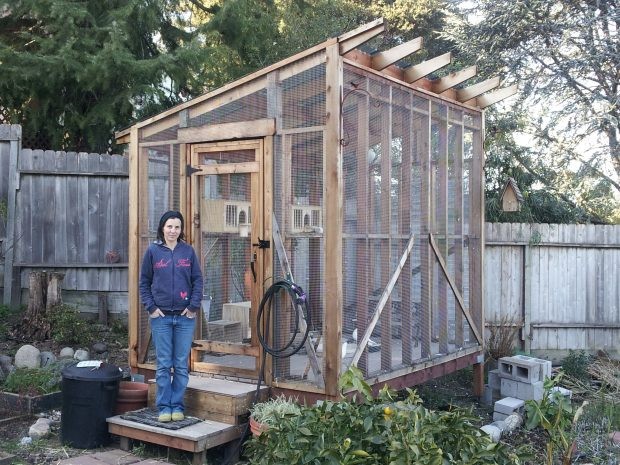Pigeons, often seen in city squares, are increasingly becoming cherished pets. While perhaps unconventional, these intelligent and gentle birds offer unique companionship. If you’re curious about How To Pet A Pigeon and welcome one into your life, this guide will walk you through everything you need to know about caring for and bonding with these fascinating creatures, whether indoors or in a dedicated outdoor aviary.
Why Pigeons Make Great Pets
Often overlooked in favor of cats and dogs, pigeons possess a charm all their own. Domestic pigeons, breeds like Kings, Fantails, Tumblers, and Homers, have been bred for centuries and are remarkably tame and unable to survive in the wild. Sadly, many of these birds end up in shelters, facing euthanasia simply due to lack of adoption. This is where you can make a difference. Pigeons are not only smart and beautiful but also incredibly gentle, offering a peaceful and rewarding pet ownership experience. They thrive in human care and can become deeply bonded companions, bringing a unique dynamic to your home, either as indoor members of the family or as delightful residents of an outdoor aviary.
Setting Up the Perfect Home for Your Pigeon
Whether you envision your pigeon as an indoor companion or an outdoor delight, creating the right environment is crucial.
Outdoor Aviaries: A Pigeon Paradise
For those who prefer an outdoor setup, an aviary is essential for rescued pigeons. These domesticated birds lack the skills to evade predators and require safe, enclosed spaces. Your aviary must be predator-proof, meaning sturdy construction on all sides, including a secure top and bottom. Rodent-proofing is equally important; use 16-gauge hardware mesh with openings of half an inch or smaller to keep unwanted guests out. Include a sheltered, shady corner to protect your pigeons from harsh sun and rain. When it comes to size, bigger is always better. For a small flock of four pigeons, aim for a minimum size of 6 feet long, 4 feet deep, and 6 feet high. An aviary provides your pigeons with a space to engage in their favorite pastimes: bathing, preening, sunbathing, foraging, and simply watching the world go by.
Indoor Living: Pigeons as Housemates
Pigeons can also flourish as indoor pets, becoming integrated members of your household. For indoor pigeons, a large cage serves as their home base. A double-flight cage or an extra-large dog kennel is suitable for a pair. Daily out-of-cage time is vital for exercise and enrichment. Pigeons are more inclined to walk than fly indoors and will quickly identify favorite spots around your home. Their adaptable and calm nature allows them to integrate well into households with other pets, including dogs and cats, provided they are kept safe and supervised. Social interaction is key for pigeons; they thrive on companionship and need a “best friend forever” – be it another bird or a dedicated human companion. Being left alone in a cage all day is not conducive to a happy pigeon.
Pigeon Care and Keeping Them Happy
Caring for pigeons is relatively straightforward, contributing to their appeal as pets. They require fresh food and water daily, and their living space needs regular cleaning. Outdoor aviaries benefit from a daily poop-scrape and a thorough weekly cleaning. Indoor cages need similar attention to hygiene. Pigeon diets primarily consist of seeds and grains formulated specifically for pigeons or doves.
Pigeons are known for their devoted pair bonds and mate for life. Mated pairs will lay eggs every four to five weeks. If you don’t want to breed pigeons, replace real eggs with fake eggs – a humane form of pigeon birth control. These birds are deeply committed to their families and take turns incubating their eggs.
Potty Training and Pigeon Pants: Managing Indoor Pigeons
One common concern about indoor pigeons is their droppings. However, healthy pigeon poop is odorless and manageable, especially on hard floors. Pigeons are intelligent and can be potty trained to specific areas. For added convenience, consider “pigeon pants”! These adorable little harnesses with attached diapers effectively catch droppings, allowing your pigeon to roam freely without worry. Pigeon pants are easy to put on, and pigeons generally tolerate them well. The diaper liner, typically half a panty-liner, needs changing every 3 hours.
Bonding and “Petting” Your Pigeon
“Petting” a pigeon is less about traditional petting like with a cat or dog, and more about building trust and interaction. Pigeons enjoy gentle interaction, and with patience and positive reinforcement, you can develop a close bond. Hand-taming is achievable with most pigeons, especially with consistent, gentle interaction. All pigeons can learn to befriend humans, offering unique companionship.
Spend time near their cage or aviary, talking softly. Offer treats like small seeds from your hand. Let them come to you at their own pace. Avoid sudden movements or loud noises that might scare them. Once they are comfortable, you can gently offer a finger for them to perch on. Some pigeons enjoy gentle head scratches, while others prefer just being near you. Observe your pigeon’s body language to understand their comfort level and preferences.
Adopting a Pigeon and Making a Difference
Countless domestic pigeons like Frances are waiting for loving homes. Unable to survive in the wild, adoption is often their only lifeline. By adopting, you’re not just gaining a unique pet; you’re saving a life. If you’re ready to open your heart and home to a pigeon, consider completing an adoption application with a pigeon rescue organization. Share this information and help spread awareness about these wonderful birds in need. You can also support pigeon rescue efforts through donations.
By understanding how to pet a pigeon – meaning how to care for, house, and bond with them – you can unlock the joys of pigeon companionship and contribute to a more compassionate world for these often misunderstood birds.

